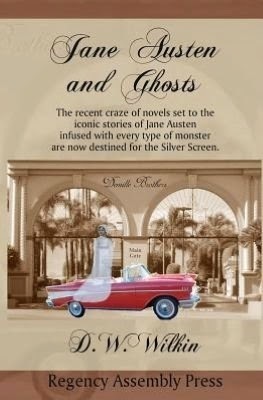D.W. Wilkin's Blog, page 158
January 20, 2015
Regency Personalities Series-Admiral Sir Richard Goodwin Keats
Regency Personalities Series
In my attempts to provide us with the details of the Regency, today I continue with one of the��many period notables.
Admiral Sir Richard Goodwin Keats
16 January 1757 ��� 5 April 1834
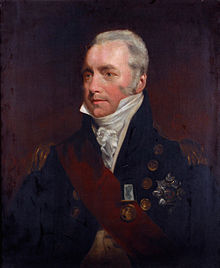
Richard Goodwin Keats
Admiral Sir Richard Goodwin Keats was born at Chalton, Hampshire the son of Rev. Richard Keats, Rector of Bideford and King’s Nympton in Devon and Headmaster of Blundells School, Tiverton, by his wife, Elizabeth. His formal education was brief. At the age of nine, in 1766, he entered New College School and was then admitted briefly to Winchester College in 1768 but lacked scholastic aptitude and determined on a career in the Royal Navy.
Keats entered the navy as a midshipman in 1770 aboard the 74-gun HMS��Bellona under Captain John Montagu and followed Montagu when he was promoted rear-admiral, given command of the North American Station and the governorship at Halifax. He served in a number of ships on the Newfoundland station under his patron and his patron���s son Captain James Montagu.
In April 1777 he was promoted to Lieutenant under Captain Robert Digby in HMS��Ramillies in which he took part in the First Battle of Ushant on 27 July 1778. As one of Digby���s followers he was moved with him to the second-rate, ninety-gun HMS��Prince George. His Royal Highness Prince William Henry, later William IV served aboard the Prince George as a midshipman for almost two years during this time.
In 1780 Keats was in Prince George with Admiral Rodney���s fleet at the Moonlight Battle that culminated in the relief of Gibraltar. Keats was with the fleet once more when it again relieved the beleaguered rock in 1781. In September 1781 Keats returned to the North American station with Digby in HMS��Lion.
On 18 January 1782 Keats was put in command of the store ship HMS��Rhinoceros which was later fitted out as a floating battery in the defense of New York. By May 1782 he had been transferred to HMS��Bonetta sloop in which he was part of the squadron that captured a French squadron including the 38-gun Aigle which was bought into British service. The Bonetta was paid off in 1785 and between that time and 1789 Keats lived in France.
On 24 June 1789 he was promoted to post-captain in HMS��Southampton, possibly at the behest of the Duke of Clarence (Prince William Henry) as a royal favour to a friend. Between 1790 and 1793 Keats commanded the HMS��Niger frigate on the Channel Station. He commissioned HMS��London in 1793 as the newly appointed flag-captain to the Duke of Clarence but was to be disappointed when the Board of Admiralty determined that it would be dangerous for the Prince and recalled him to London.
In 1794 Keats was in Sir John Borlase Warren���s squadron in the Channel in command of the 32-gun frigate HMS��Galatea. In her he took part in the running battles along the French, English and Irish coasts that became highly publicized and exemplified the romantic image of naval warfare as it was perceived by the general public. In 1795 Galatea captured La Revolutionnaire.
In the same year the Galatea took part in the failed landing of an invasion force at Quiberon Bay. The invasion force consisted of French Royalist ��migr��, counter-revolutionary troops in support of the Chouannerie and Vend��e Revolt. They were landed by the Royal Navy on 23 June. The aim of the invasion was to raise the whole of western France in revolt, bring an end to the French Revolution and restore the French monarchy. The Landing of the ��migr��s at Quiberon was finally repulsed on 21 July, dealing a disastrous blow to the royalist cause.
On 23 August 1795 Keats in the Galatea drove the French frigate Andromaque ashore and set her alight to stop the French refloating her.
In May 1797 Galatea was at the Nore anchorage and Keats along with several other captains was put ashore during the fleet mutiny.
Subsequently he commissioned the newly built 40-gun HMS��Boadicea. Under Keats she served on the Channel station for several years during which time she captured at least three prizes. The first was the 22-gun Spanish ship Union, which she captured on 14 August 1797. On 9 December 1798 Boadicea captured the 20-gun French privateer L��Invincible General Bonaparte. The Admiralty took this vessel into service as the 18-gun sloop HMS��Brazen. On 1 April 1799 Keats also captured L’Utile, a Brig of 16-Guns. During this time Keats was stationed mainly off Brest. He continued there until 1800 when he was reassigned by Earl St. Vincent to Ferrol.
By March 1801 Keats was placed in command of the ship with which he is most associated. HMS��Superb was a 74-gun third-rate ship-of-the-line ordered in 1795 and completed in 1798.
In July 1801 she was stationed off Cadiz and took part in the second Battle of Algeciras Bay. During the French and Spanish retreat Admiral Sir James Saumarez hailed the Superb and ordered Keats to catch the allied fleets rear and engage. The Superb was a relatively new ship and had not been long on blockade duty. As a consequence she was the fastest sailing ship-of-the-line in the fleet. As night fell Keats sailed the Superb alongside the 112-gun Real Carlos on her starboard side. Another Spanish ship, the 112-gun San Hermenegildo, was sailing abreast, on the port side, of the Real Carlos. Keats fired into the Real Carlos and some shot passed her and struck the San Hermenegildo. The Real Carlos caught fire and Keats disengaged her to continue up the line. In the darkness the two Spanish ships confused one another for British ships and began a furious duel. With the Real Carlos aflame the captain of the Hermenegildo determined to take advantage and crossed the Real Carlos��� stern in order to deal a fatal broadside that would run the length of the ship through the unprotected stern. A sudden gust of wind brought the two ships together and entangled their rigging. The Hermenegildo also caught fire and the two enormous three-deck ships exploded. The Superb continued on relatively unscathed and engaged the French 74-gun St. Antoine under Commodore Julien le Roy. The St. Antoine struck after a brief exchange of broadsides. The action came to an end with the intervention of Captain Amable Troude aboard the Formidable. Troude placed his ship, which had been damaged in the earlier engagement and could not keep up with the main allied fleet, between the escaping allied fleet and the British. He fought off four ships before escaping into Cadiz.
Both Troude and Keats were highly praised by their commanders and the general public. Troude received an audience with Napoleon. Nelson said of Keats in a letter to the Duke of Clarence: ���Our friend Keats is quite well in his own person he is equal in my estimation to an additional Seventy-four; his life is a valuable one to the State, and it is impossible that your Royal Highness could ever have a better choice of a Sea friend, or Counsellor, if you go to the Admiralty.���
After the Treaty of Amiens in 1802 Keats and Superb remained in the Mediterranean under Admiral Sir Richard Bickerton. When Nelson relieved Bickerton and took command of the fleet in the Mediterranean Keats remained with him off Toulon and accompanied the fleet to the West Indies in 1805 in the famous chase of Admiral Villeneuve that culminated in the Battle of Trafalgar. After the fleets return to the European waters Superb was sent to Portsmouth to re-fit. Unfortunately she did not rejoin the fleet off Cadiz until November 1805 missing the Battle of Trafalgar by less than a month.
On 9 November 1805 Keats was made an honorary Colonel of Marines, received the thanks of Parliament and a presentation sword from the Lloyd’s Patriotic Fund.
Admiral Duckworth took Superb as his flagship in 1806. Duckworth took the fleet blockading Cadiz and chased Contre-Admiral Jean-Baptiste Willaumez to the West Indies. Vice-Admiral Corentin Urbain Leiss��gues had separated from Willaumez in the Atlantic and made for Santo Domingo to resupply and refit. Duckworth was in the process of resupplying his ships at St. Kitts when he learned of the French squadron anchored in Santo Domingo. Duckworth took his squadron of seven line-of-battle ships and attacked Leiss��gues’ five ships of the line. The Battle of San Domingo was the last open sea fleet action of the Napoleonic War. During the battle Superb suffered 62 casualties in what became an almost total victory for the Royal Navy. Of the five French line-of-battle ships engaged two were captured and three driven on shore and later destroyed. The British did not lose a single ship.
By 1807 Superb had returned to the Channel and Keats was relieved by Sir Richard Strachan. Keats then took command of HMS��Ganges and was promoted commodore with Admiral Gambier���s squadron in the Baltic where between 16 August and 7 September he took part in the Second Battle of Copenhagen. During the battle Keats placed a portrait of Nelson on the mizzen mast. It was later said that the portrait had encouraged and inspired the officers and men aboard.
Keats was promoted rear-admiral on 2 October 1807 and moved into HMS��Mars. He led the expedition with Lieutenant General Sir John Moore to the aid of the Swedish at Gothenburg. As a reward for his services he made a Knight Commander of the Order of the Bath.
Keats moved his flag to the Superb in early 1808. After convoying the Swedish trade from Gothenburg to England he joined Sir Richard Strachan on his expedition to the Scheldt river. On the Superb���s return to Portsmouth in 1809 she was paid off and Keats was promoted to rear-admiral of the blue squadron.
On 26 December 1809 was given the post of His Majesty’s Commissioner for the Civil Affairs of Malta. In 1810 after a nearly twenty one year���s continuous service took leave ashore.
After only a few months however Keats hoisted his flag in HMS��Implacable and took command of naval forces off Cadiz. On 1 August 1811 Keats was promoted vice-admiral and joined Sir Edward Pellew off Toulon.
Keats was forced to haul down his flag in 1812 due to ill health and in recognition of his service on 9 March 1813 he was made Governor and Commander-in-Chief of Newfoundland. During his term as governor the British government agreed for the first time to let Newfoundland settlers lease land for cultivation. Keats granted 110 leases around St. John’s in the first year alone. In 1816 he returned to England and was succeeded as Governor of Newfoundland by Francis Pickmore.
On 7 May 1818 Keats was promoted to the honorary title of Major-General of His Majesty’s Royal Marine Forces. On 12 August 1819 Keats was promoted Admiral of the Blue.
In 1821 he was further honoured by his appointment as governor of Greenwich Hospital and investiture as Knight Grand Cross of the Most Honourable Military Order of the Bath.
Keats died in Greenwich on 5 April 1834 and his funeral was held at the hospital chapel with the Admiralty Board in attendance. His coffin was borne by six admirals as pall-bearers.
William IV ordered a bust of his friend to be erected in the chapel and it remains there, under the organ loft on the left hand side of the main entrance. The right hand side is occupied by a bust of Sir Thomas Hardy.
In 1816 Keats married Mary, eldest daughter of the late Francis Hurt of Alderwasley in Derbyshire. There were no children from the marriage

Fantasy from Space Opera Books, Trolling’s Pass and Present
Trolling���s Pass and Present
Not only do I write Regency and Romance, but I also have delved into Fantasy. The Trolling series, (the first three are in print) is the story of a man, Humphrey.
We meet him as he has left youth and become a man with a man���s responsibilities. We follow him in a series of stories that encompass the stages of life.
We see him when he starts his family, when he has older sons and the father son dynamic is tested. We see him when his children begin to marry and have children, and at the end of his life when those he has loved, and those who were his friends proceed him over the threshold into death.
All this while he serves a kingdom troubled by monsters. Troubles that he and his friends will learn to deal with and rectify.
It is now available in a variety of formats. For $2.99 you can get this fantasy adventure.
Barnes and Noble for your Nook
Years since their battles with the Trolls, even on foreign soil, the warriors of the Valley Kingdom of Torahn need something to keep their edge honed.
The economy too is beginning to fray a little without the great wars to support. The Leaders hit upon the idea of searching for a path to reach the east side of the continent.
The Elves swear that at one time their writings tell of such, the Dwarves swear such a pass across Teantellen is legendary. Teantellen though is filled with races man has never gotten along with well. Goblins, Dark Elves, Trolls, Giants and Dragons.
It has been years since the mountain tops exploded, and perhaps that has changed things enough that a way can be found to link the western lands with the eastern lands and increase trade, and prosperity for all. Even should they fail in their quest, as the history of man has shown to this point in time, the attempt will do much to spur the economy.
Tens of thousands of gold will be spent by the Council of Twenty-One to pay for such an expedition. Gold that those who are not so scrupulous might choose to pocket as they tried in the Troll Wars.
With such shenanigans taking place again, are the hopes of the previous generation, the leaders from the Troll Wars now in retirement, ready to be achieved? Is it time for Torahn, called the Valley Kingdom, but the only Kingdom without a King, to have a King once more?
Feedback
If you have any commentary, thoughts, ideas about the book (especially if you buy it, read it and like it ;-) then we would love to hear from you.

January 19, 2015
Regency Personalities Series-Frederick Lamb 3rd Viscount Melbourne
Regency Personalities Series
In my attempts to provide us with the details of the Regency, today I continue with one of the��many period notables.
Frederick Lamb 3rd Viscount Melbourne
17 April 1782 – 29 January 1853
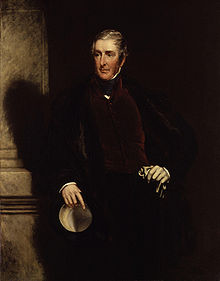
Frederick Lamb
Frederick Lamb 3rd Viscount Melbourne known as the Lord Beauvale from 1839 to 1848, was a British diplomat.
Lamb was a younger son of Peniston Lamb, 1st Viscount Melbourne, and his wife Elizabeth Milbanke, and the younger brother of Prime Minister William Lamb, 2nd Viscount Melbourne. Since his mother had numerous lovers, his real paternity is a matter of conjecture. He married Alexandrina Julia Theresa Wilhelmina Sophia Gr��fin von Maltzan, daughter of Joachim Charles Leslie Mortimer Graf von Maltzan. It was generally considered to be a love marriage: even though Alexandrina was more than thirty years her husband’s junior, he was described as being “as handsome and debonair at sixty as he had been at twenty-five.” William, Frederick and their sister Emily remained close all their lives, although Frederick and Emily disliked William’s wife Lady Caroline Lamb, whom they called “the little beast”.
He served as British Ambassador to Vienna ending in 1841. He was invested as a Knight Grand Cross of the Order of the Bath and admitted to the Privy Council in 1822. In 1839 he was raised to the peerage as Baron Beauvale, of Beauvale in the County of Nottingham. In 1848 he succeeded his elder brother as third Viscount Melbourne.
Despite a certain personal coolness between them, Lord Palmerston, as Foreign Secretary placed great confidence in Lamb, wrote to him in a courteous style very different from his usual brusque manner, and left the running of the Vienna Embassy almost entirely in his hands. The coolness was due to Palmerston’s decades-long affair with Lamb’s sister Emily, Lady Cowper; Lamb disapproved of the affair and equally of their eventual marriage, although this proved to be very happy.
Palmerston’s biographer notes that the marriage coincided with the early stages of the Oriental Crisis of 1840, and that the two men, although they were then personally barely on speaking terms, cooperated in an entirely professional way to resolve it. Palmerston, in addition to his real respect for Lamb, was anxious not to quarrel with him for Emily’s sake: as Charles Greville remarked: “the Chief (Palmerston) is devoted to the sister and the sister to the brother”. Relations between the two men became friendlier in later years, partly because both Palmerston and Emily were fond of Alexandrina.
Lord Melbourne died childless in January 1853, aged 70, and all his titles became extinct. The family seat of Melbourne Hall passed to his sister Emily. His widow remarried in 1856 to John Weld-Forester, 2nd Baron Forester, was widowed again in 1873, and died in 1894.

RAP has The Shattered Mirror, A Regency Romance
The Shattered Mirror
For your enjoyment, one of the Regency Romances I published. It is available for sale and now at a reduced price of $3.99, and I hope that you will take the opportunity to order your copy.
Order for yourself or as a gift. It is now available in a variety of formats. For just a few dollars this Regency Romance can be yours for your eReaders or physically in Trade Paperback.
Barnes and Noble for your Nook
and in Trade Paperback
Bridget Halifax-Stokes was giddy with the excitement of her season in London. Town had beckoned and her season came on the heels of the end of the war against the tyrant.
All the handsome men were returning heroes. What better year to come out.
Her father thought it all nonsense. Her mother believed that it would be the best showing of any of her daughters.
More lords available and luck that Bridget was just the perfect age.
All is fun and frivolity until Bridget literally crashes into Sir Patrick Hampton as he limps along the high street. A man she knew once well, now a stranger with dark and foreboding eyes.
Feedback
If you have any commentary, thoughts, ideas about the book (especially if you buy it, read it and like it ;-) then we would love to hear from you.

January 18, 2015
Regency Personalities Series-Sophia Campbell nee Palmer
Regency Personalities Series
In my attempts to provide us with the details of the Regency, today I continue with one of the��many period notables.
Sophia Campbell nee Palmer
December 14 1777���May 5 1833
Sophia Campbell nee Palmer was one of eight children, Sophia Palmer was born in Portsmouth and educated in London. She came to Sydney with her naval officer brother John Palmer (1760-1833) and his family, a second unmarried naval officer brother Christopher Palmer (1767-1821), and her unmarried sister Sarah Sophia Palmer (1774-?) on board the Porpoise in November 1800. Her brother John Palmer was bringing his family to settle permanently in New South Wales, and had previously come to Sydney in 1788 as Purser on the Sirius, the flagship of the First Fleet. He had also been Commissary General of New South Wales from 1791 to 1811, remaining employed in the Commissariat until he retired in 1819; and he was a magistrate from 1793.
Sophia first settled on John Palmer’s 100 acres (40 ha) 1793 grant which he named Woolloomooloo Farm. Within a year, on 17 September 1801, Sophia married the merchant Robert Campbell, a Scottish Presbyterian eight years her senior, in St Philip’s Church, Sydney.
Sophia moved to Wharf House, her husband Robert Campbell���s home behind his wharves on the west side of Circular Quay. Apart from two trips to England (in 1805-06 and 1810���15) and shorter journeys to various parts of New South Wales, she lived in Sydney until her death.
Sophia was until 2009 thought to have been an artist in the early colony. This was disproved and she is now known not to have been one.
Sophia died in 1833 and was buried in St John���s Cemetery, Parramatta.

January 17, 2015
Regency Personalities Series-William Pole-Tylney-Long-Wellesley 4th Earl of Mornington
Regency Personalities Series
In my attempts to provide us with the details of the Regency, today I continue with one of the��many period notables.
William Pole-Tylney-Long-Wellesley 4th Earl of Mornington
22 June 1788 ��� 1 July 1857
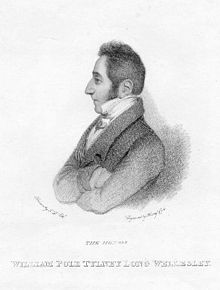
William Pole-Tylney-Long-Wellesley
William Pole-Tylney-Long-Wellesley 4th Earl of Mornington was born on 22 June 1788 in London and baptised at St George’s, Hanover Square, on 19 July, the son of William Wesley and his wife Katherine-Elizabeth Forbes. The Wesley family changed their surname to the more Anglicised ‘Wellesley’ in the early 1790s.
On 14 January 1812, several weeks in advance of his marriage on 14 March 1812 to Catherine, daughter and co-heiress of Sir James Tylney-Long, 7th Baronet, of Draycot, Wiltshire, William Wellesley-Pole assumed the additional surnames of Tylney-Long, changing his name by Royal Licence. His wife was known in fashionable London society as “The Wiltshire Heiress”, Catherine was believed to be the richest commoner in England. Her estates in Essex, Hampshire, and Wiltshire, were said to be worth ��40,000 per year in rents – over two million pounds per year at current values. She also had financial investments in hand worth ��300,000, and had been sought in marriage by the Duke of Clarence, later King William IV. William brought nothing to the Union but his substantial debts and his personal charms, and he even forgot the ring.
During this period, William enjoyed a political career, first as a Tory Member of Parliament for the pocket borough of St Ives from 1812 until 1818, and then for Wiltshire, where his wife’s family was influential. However, he was principally known for his dissipation and extravagance. On one occasion in 1814, Long-Wellesley held a grand f��te in Wanstead House and its gardens to celebrate his uncle the Duke of Wellington’s victory over Napoleon, attended by the Prince Regent, a number of other members of the royal family, and over a thousand dignitaries. He was also known to be a friend of the Irish poet Thomas Moore and of Lord Byron. On 8 August 1822, as his debts began to mount, he was appointed a Gentleman Usher to King George IV, an appointment which rendered him immune to arrest for debt, but he was soon to leave England entirely.
While in Europe evading his creditors, Long-Wellesley began a relationship with Helena Paterson Bligh (d. 7 April 1869), the wife of Captain Thomas Bligh of the Coldstream Guards, eventually abandoning Catherine, who died two years later on 12 September 1825. Catherine had implied in a letter to her sisters that her husband had given her a venereal disease. Long-Wellesley subsequently married Helena in 1828, but this marriage also proved disastrous. Long-Wellesley, a notorious rake, was generally charged with having dissipated his first wife’s property, but this he had been unable to do, having only a life interest in it, although he was responsible for the demolition of Wanstead House, the proceeds of which covered only some of his enormous debts.
He returned to Parliament in 1830, again as a member for St Ives, and as knight of the shire for Essex from 1831 to 1832. He was one of the Tories who broke with the first Wellington Ministry and brought about its fall on 15 November 1830.
In the years following Catherine’s death, Long-Wellesley sought control over his children, who were in the care of Catherine’s two unmarried sisters, Dorothy and Emma. He was especially interested in William, the eldest, on whom Catherine’s fortune had devolved. His uncle the Duke of Wellington, fighting one of his furious defensive actions, intervened on behalf of the children to keep the hapless William from his father’s clutches. Deprived of the custody of his children by the Court of Chancery, Long-Wellesley was committed to the Fleet prison by Lord Brougham in July 1831 for contempt of court; Long-Wellesley invoked parliamentary privilege, but his plea was rejected by the committee of privileges of the House of Commons. For some time he was in and out of court on charges of libel, and various other matters relating to his quest for custody of his children.
He led a very dissipated life and lived for a time in Brussels to avoid his creditors. In his last years he lived on a small pension of ���10 a week allowed by his cousin Arthur Wellesley, 2nd Duke of Wellington. From 1842 he was styled Viscount Wellesley, and succeeded his father as Earl of Mornington in 1845.
He died in lodgings in Thayer Street, Manchester Square, London, on 1 July 1857, from heart disease. The obituary notice three days later in the Morning Chronicle claimed that he was:
“A spendthrift, a profligate, and a gambler in his youth, he became debauched in his manhood… redeemed by no single virtue, adorned by no single grace, his life gone out even without a flicker of repentance”.
His coffin is in Catacomb B, Kensal Green Cemetery, London.

January 16, 2015
Regency Personalities Series-George Montagu 6th Duke of Manchester
Regency Personalities Series
In my attempts to provide us with the details of the Regency, today I continue with one of the��many period notables.
George Montagu 6th Duke of Manchester
9 July 1799 ��� 18 August 1855
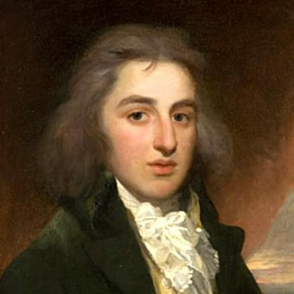
George Montagu
George Montagu 6th Duke of Manchester known as Viscount Mandeville from 1799 to 1843, was a British peer and Tory Member of Parliament.
Manchester was the son of William Montagu, 5th Duke of Manchester. His father, who was Governor of Jamaica, had the newly founded town of Mandeville, Jamaica named after his eldest son, who, as was customary, carried the title of Viscount Mandeville before he succeeded to his father’s title. He was MP for Huntingdonshire 1826���1837.
He married, firstly, Millicent Sparrow (25 January 1798 ��� Kimbolton Castle, 21 November 1848), daughter of Brig. Gen. Robert Bernard Sparrow of Brampton Park, Huntingdonshire (d. 1805), and wife (married on 14 March 1797) the Hon. Olivia Acheson (d. 12 February 1863), daughter of the 1st Earl of Gosford, on 8 October 1822 at London. They had four children:
William Montagu, 7th Duke of Manchester (1823���1892)
Lord Robert Montagu (1825���1902), married Ellen Cromie and Elizabeth Wade and had issue.
Lord Frederick Montagu (5 October 1828 ��� 29 October 1854), who died unmarried and without issue
Lady Olivia Montagu (18 July 1830 ��� Greystones, Tunbridge Wells, Kent, 15 February 1922 and interred at Chillingham on 20 February 1922), married at Kimbolton Castle, Huntingdonshire, 29 January 1850 Charles Bennet, 6th Earl of Tankerville, and had issue.
He married, secondly, Harriet Sydney Dobbs (4 December 1834 ��� Ore, Sussex, 20 May/30 May 1907), daughter of Conway Richard Dobbs of Castle Dobbs, Antrim, Ireland, and wife, on 29 August 1850 at Kilroot, County Antrim, later remarried without issue on 16 December 1858 to Sir Stevenson Arthur Blackwood, and had two children:
Lady Sydney Charlotte Montagu (14 October 1851 ��� Keithhall, Inverurie, Aberdeen, 21 September 1932), married at St. George, Hanover Square, London, 14 August 1873 Algernon Hawkins Thomond Keith-Falconer, 9th Earl of Kintore
Lord George Francis Montagu (18 January 1855 ��� 12 March 1882), a Lieutenant who died unmarried and without issue

Trolling Down to Old Mah Wee, another Fantasy
Trolling Down to Old Mah Wee
Not only do I write Regency and Romance, but I also have delved into Fantasy.
The Trolling series, (the first three are in print) is the story of a man, Humphrey. We meet him as he has left youth and become a man with a man���s responsibilities. We follow him in a series of stories that encompass the stages of life.
We see him when he starts his family, when he has older sons and the father son dynamic is tested. We see him when his children begin to marry and have children, and at the end of his life when those he has loved, and those who were his friends proceed him over the threshold into death.
All this while he serves a kingdom troubled by monsters. Troubles that he and his friends will learn to deal with and rectify. It is now available in a variety of formats.
For $2.99 you can get this 2nd book in the fantasy adventure series of Humphrey and Gwendolyn.
Barnes and Noble for your Nook
When the neighboring kingdom of Mah Wee begins to experience the same problems that beset Torahn some years before, they urgently request the aid of the experts in containing a new Troll infestation. But eradicating Trolls is not as easy as exterminating a few rats or mice.
Trolls are bigger than men, they are stronger than men, and then are meaner than men. Humphrey Cutter and his band of mismatched warriors must once again rise to the occasion, but can they without the aid of expertise of Gwendolyn and her particular skills? ����
Mah Wee, an ancient kingdom, with a monarch more steeped in the rights of being a king rather than the obligations and duties that a king should be. Here Humphrey and his crew finds that they have more than Trolls to overcome if they are to save Mah Wee from the same or nearly similar problems that they faced before in Torahn.
But, as Humphrey knows, nothing can truly be accomplished if the lovely Gwendolyn is not able to lend her aid as well.
Feedback
If you have any commentary, thoughts, ideas about the book (especially if you buy it, read it and like it ;-) then we would love to hear from you.

January 15, 2015
Regency Personalities Series-Thomas Perronet Thompson
Regency Personalities Series
In my attempts to provide us with the details of the Regency, today I continue with one of the��many period notables.
Thomas Perronet Thompson
1783���1869)
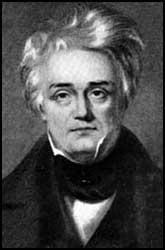
Thomas Perronet Thompson
Thomas Perronet Thompson was born in Kingston upon Hull in 1783. He was son of Thomas Thompson, a banker of Hull and his wife, Philothea Perronet Briggs. The name Perronet was from his mother’s grandfather, Vincent Perronet, vicar of Shoreham and a friend of John Wesley and his brother Charles Wesley. He was educated at Hull Grammar School. He graduated from Queens’ College, Cambridge in 1802. From 1803, Thompson served as a midshipman in the Royal Navy, switching to the British Army (as a lieutenant) in 1806. Thompson became Governor of Sierra Leone between August 1808 and June 1810, due in part to his acquaintance with William Wilberforce. He was recalled from the job after complaining about the system by which “freed” slaves were compulsorily “apprenticed” for fourteen years in Sierra Leone. He wrote that Wilberforce and the Sierra Leone Company had “by means of their agents become slave traders themselves”. He threatened to expose this situation, so he was sacked, with Wilberforce himself agreeing to the dismissal.
In 1812, Thompson returned to his military duties, and, after serving in the south of France, was in 1815 attached as Arabic interpreter to an expedition against the Wahabees of the Persian Gulf, with whom he negotiated a treaty (dated January 1820) in which the slave trade was for the first time declared piracy. Whilst in the Army, Thompson was promoted to Major in 1825, Lieutenant Colonel in 1829 and in later years was made a Major General. While serving in the Army in India, his second son, Charles, was born at Bombay.
As a radical reformer, Thompson wrote the True Theory of Rent and A Catechism on the Corn Laws. He also joint-owned the Westminster Review for a time. He wrote several articles in the journal supporting universal suffrage. Thompson represented Kingston upon Hull in the House of Commons from 1835 to 1837 and was elected to represent Bradford in 1847.
Thompson was also involved in music, writing books on Harmony and Just Intonation e.g. for the guitar titled Instructions to my daughter for playing on the enharmonic guitar, and building an organ with over 40 notes to the octave, to “realise the visions of Guido and Mersenne.

Jane Austen Fans Rejoice, Jane is BACKKKK��� Jane Austen and Ghosts
Special Sale Price!
Jane Austen and Ghosts.
Not only do I write Regency and Romance, but this can take a humorous turn. Some years back, I am sure readers of this blog will be aware that some writers began to take great liberty with Jane Austen and her works. Pride and Prejudice being liberally rewritten with the inclusion of zombies.
Then other books appeared with sea monsters, and werewolves and vampires. President Lincoln has even made it to the big screen where he is intent on sending foul creatures to hell. It occurred to me, even before I read any of this literature, that Jane would probably not appreciate what had been done to her classic piece.
That the tales and her life have become visual spectacles that we enjoy she might not like either, but is perhaps resigned to. That zombies, ghosts and vampires are now used to follow her own plot lines would I think, have her turning over in her grave. Jane Austen and Ghosts is my take on that.
It is now available in a variety of formats. For a limited time it has been reduced to $2.99 for your eReaders and $8.99 for paperback you can get this Jane Austen adventure.
Barnes and Noble for your Nook
and in Paperback
In the world of moviemaking, nothing is as golden as rebooting a classic tale that has made fortunes every time before when it has been adapted for the silver screen.
Certainly any work by Jane Austen made into a movie will not only be bankable, but also considered a work of art. That is of course until the current wave of adaptations that unite her classic stories with all the elements of the afterlife is attempted to be created.
That these have found success in the marketplace amongst booklovers may not be quite understood by those who make movies. But that they are a success is understood and a reason to make them into movies.
All that being said, perhaps it would also be fair to say that the very proper Jane, were she present to have anything to say about it, would not be pleased. Of course she has been away from this Earth for nearly 200 hundred years.
But does that mean were she upset enough, she wouldn���t come back?
Feedback
If you have any commentary, thoughts, ideas about the book (especially if you buy it, read it and like it ;-) then we would love to hear from you.





